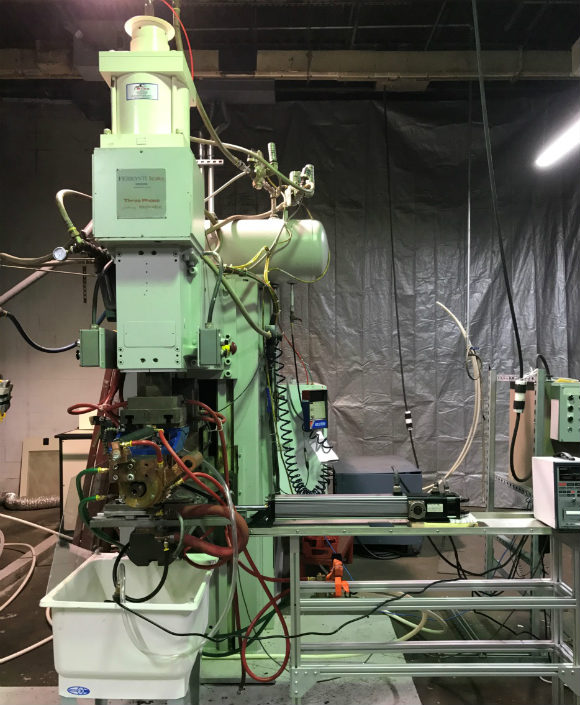Under-Water Cosmetic Resistance Seam Welding of Aluminum Alloys
Common Issues with Seam Welding Aluminum Alloys
- A large quantity of 5000 and 6000 Series aluminum alloys are welded along long seams in the manufacture of a variety of structures such as 53-foot (Approximately 17 meters) long semi-trucks and a host of ocean going vessels
- Arc welded 5000 series structures such as ship decks and semi-truck bodies suffer from a multitude of quality issues
- Magnesium aluminide precipitates formed in the weld heat-affected zones (HAZs) due to the weld heat corrode in salty roads or marine environments
- The welding processes are very expensive, cause much distortion of the welded structure and unreliable weld quality especially at weld starts and ends
- The welded structures also experience much loss of strength due to the weld heat relieving and softening the cold worked material strength in the HAZs
- A large quantity of 5000 and 6000 Series aluminum alloys are welded along long seams in the manufacture of a variety of structures such as 53-foot (Approximately 17 meters) long semi-trucks and a host of ocean going vessels
- Friction-stir welded 5000 series alloy seams also suffer from similar quality issues
- A heterogeneous weld seam that is difficult to inspect non-destructively and contains micro-cracks
- A weld HAZ that is sensitized by the formation of magnesium aluminides that cause corrosion in salty roads and marine environments
- The process is very expensive and weld tool design and maintenance are complicated
- Since the parts welded are water-cooled during welding, the temperatures in the Heat-Affected Zone (HAZ) areas remain cool and magnesium aluminide precipitation does not occur
- The resulting welded structure does not suffer sensitization-corrosion in marine environments or salty roads
- The process is inexpensive and very productive
- The part is welded and cooled in water under good fixturing to minimize weld distortion
IWSL’s New FMRSEW Under-Water Resistance Seam Welding Helps Solve These Quality Issues
The seam welder simulates under-water welding by splashing water at the welded part as it is welded
Stay tuned for welded part photos, microstructures, micro-hardness traverse data and mechanical properties
How can the FMRW Welding Solutions help you?
Contact us to discuss your application, and how IWSL’s patented technology can increase your efficiency, quality and profitability.

